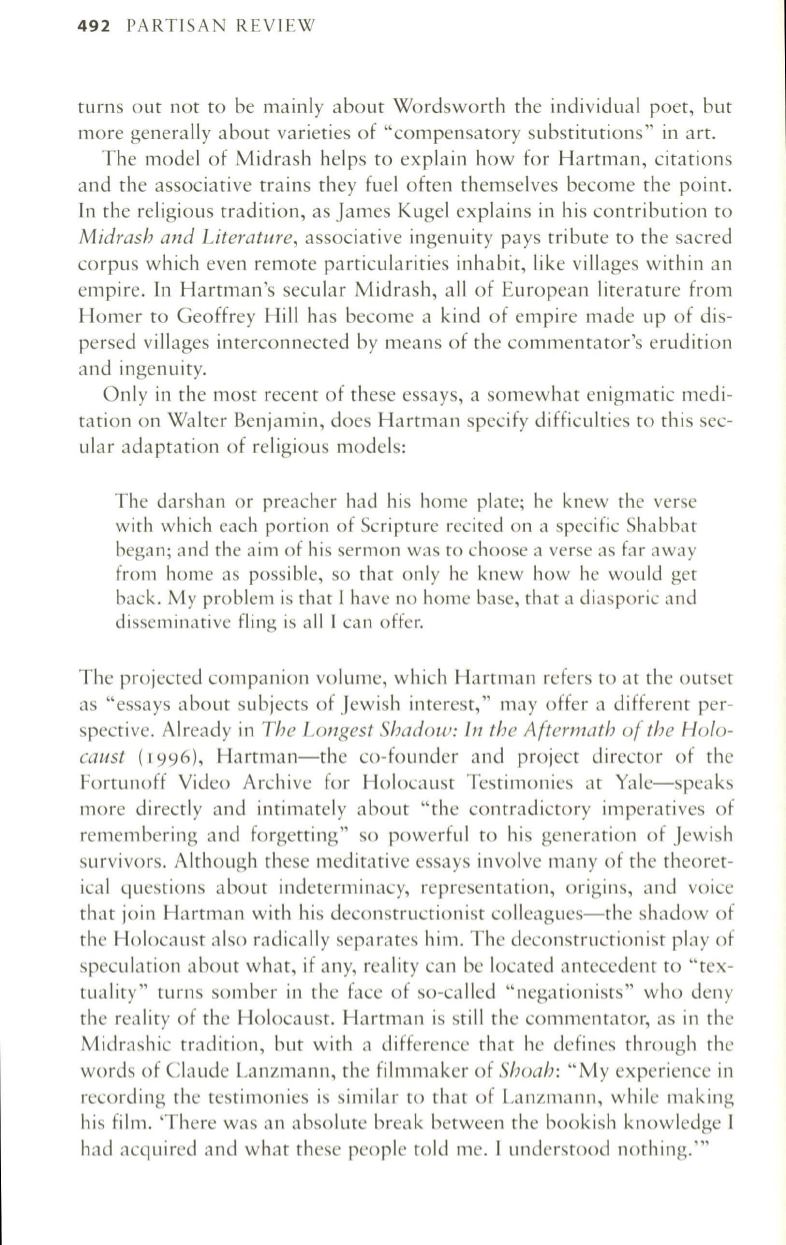
492
PARTISAN REVIEW
turns out not to be mainly about Wordsworth the individual poet, but
more generally about varieties of "compensatory substitutions" in art.
The model of Midrash helps to explain how for Hartman, citations
and the associative trains they fuel often themselves become the point.
In the religious tradition, as james Kugel explains in his contribution to
Midrash and Literature,
associative ingenuity pays tribute to the sacred
corpus which even remote particularities inhabit, like villages within an
empire. In Hartman's secular Midrash, all of European literature from
Homer to Geoffrey Hill has become a kind of empire made up of dis–
persed villages interconnected by means of the commentator's erudition
and ingenuity.
Only in the most recent of these essays, a somewhat enigmatic medi–
tation on Walter Benjamin, does Hartman specify difficulties to this sec–
ular adaptation of religious models:
The darshan or preacher had his home plate; he knew the verse
with which each portion of Scripture recited on a specific Shabbat
began; and the aim of his sermon was to choose a verse as far away
from home as possible, so that only he knew how he would get
back. My problem is that I have no home base, that a diasporic and
disseminative fling is all
I
can offer.
The projected companion volume, which Hartman refers to at the outset
as "essays about subjects of jewish interest," may offer a different per–
spective. Already in
The Longest Shadow: In the Aftermath of the Holo–
caust
(T996),
Hartman-the co-founder and project director of the
Fortunoff Video Archive for Holocaust Testimonies at Yale-speaks
more directly and intimately about "the contradictory imperatives of
remembering and forgetting" so powerful to his generation of jewish
survivors. Although these meditative essays involve many of the theoret–
ical questions about indeterminacy, representation, origins, and voice
that join Hartman with his deconstructionist colleagues-the shadow of
the Holocaust also radically separates him. The deconstructionist play of
speculation about what, if any, reality can be located antecedent to "tex–
tuality" turns somber in the face of so-called "negationists" who deny
the reality of the Holocaust. Hartman is still the commentator, as in the
Midrashic tradition, but with a difference that he defines through the
words of Claude Lanzmann, the filmmaker of
Shoah:
"My experience in
recording the testimonies is similar to that of Lanzmann, while making
his film. 'There was an absolute break between the bookish knowledge I
had acquired and what these people told me. I understood nothing.'"


